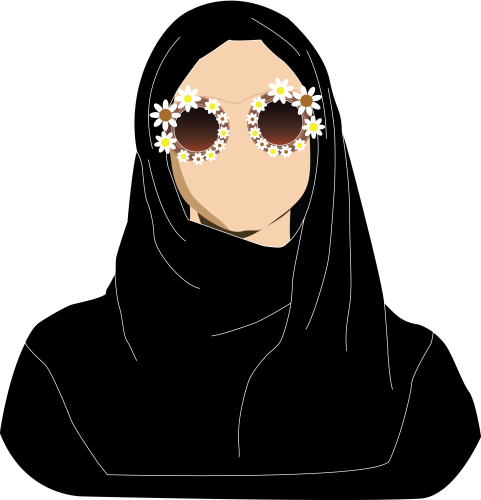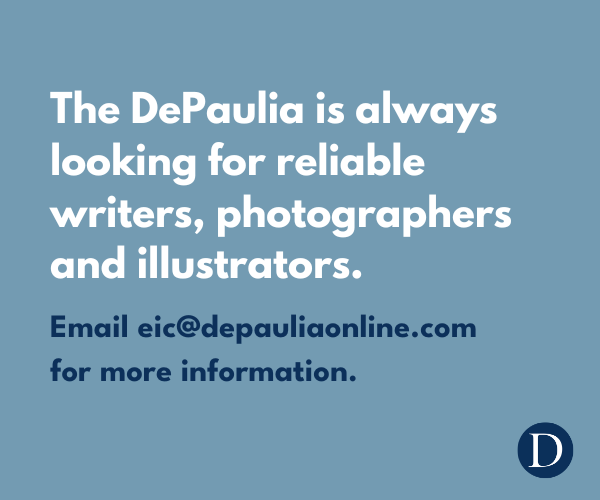
Earlier this month, well-established fashion house Dolce & Gabbana released their first line of hijabs and abayas, a collection aimed at elite Muslim women.
The Quran asks for both men and women to dress modestly, and hijabs and abayas are traditional Muslim garments women wear to maintain a conservative look. A hijab is a veil that covers the head, neck and chest and an abaya is a cloak that typically covers the entire body except for the hands, feet and face.
According to The Atlantic, Dolce & Gabbana’s Abaya Collection will be sold in the Middle East, Paris and London.The line’s hijabs and abayas feature lace and florals, creating delicate and feminine looks that are still conservative.
Fashion and social justice outlets have celebrated this move across the board calling it inclusive. However, the collection has its share of criticism.
Some proponents of the Abaya Collection claim that the decision to have a line featuring hijabs and abayas was prompted solely by the enticing profit that would come out of it. According to Fortune Magazine, Muslims spent $266 billion total in clothing and shoes in 2013, more than Italy and Japan combined.
Regardless of the profits that Dolce & Gabbana will gain, fashion enthusiasts, social justice advocates and retailers alike should celebrate the Abaya Collection. It is both an attempt to include Muslim women in the fashion world and an opportunity to capitalize on this market. It is more than likely that the company did this because of the untapped market. However, finding increased humanity and inclusiveness as a result of capitalism is a rarity we should cherish.
Complaints addressing the lack of representation for minorities in the beauty and fashion industry are continually relevant. From foundation tones to casting calls, the modeling industry is notorious for not properly representing people of color. According to The Guardian, the Muslim population in England, one of the few places where the line has been released, nearly doubled in the past 10 years topping 2.8 million. Despite this, models of color both in ads and on the runway are exceptions.
According to The Fashion Spot, which evaluated almost 10,000 models and upwards of 300 shows, nearly 80 percent of models walking in the 2015 Fashion Week were white. Popular designers with multinational audiences such as Giorgio Armani, Saint Laurent and Comme Des Garcons all hired two or less models of color in their runway show.
These statistics demonstrate the lack of diversity shown in London, Paris, Milan and New York Fashion Weeks. African-Americans are the most frequent people of color included in these high fashion shows. Famous minority models such as Jordan Dunn have said that there is one black model for every 10 white models. Meanwhile, many women of Middle Eastern, Indian, Hispanic and Native American descent are usually not included at all. This kind of tokenism is both morally wrong, as it encourages a sense of alienation for individuals of color in Western worlds, and logically wrong, as it is intensely inaccurate as a reflection of individuals who are interested in fashion. This trend is not unexpected and has been a pervasive problem for years.
It makes sense to mirror the characteristics an audience will have, and Underrepresented groups, including Muslim women, are part of that audience.
Dolce & Gabanna’s Abaya Collection also has the potential to encourage more diverse casting of models. Incorporating the abaya and hijab as fashion pieces takes significant steps towards including a population of women that has long been ignored in the high-end fashion industry. By representing a widely ignored or criticized culture, high fashion is not only doing something ethically right, but planting the seeds of a market that potentially has untapped capacity for profit and growth.
According to The New York Post, abayas and hijabs from the high-end retailer start around $695 and top out at about $7,000, but that doesn’t mean that the beneficiaries of Dolce & Gabbana’s collection stop at the very rich. High-end fashion trends traditionally end up trickling down to the more casual market, and this move adds fire to an exciting flame that lower-level fashion giants such as UNIQLO and H&M have been fanning.
These companies have pioneered inclusion for Muslim women as well. H&M, a “fast-fashion” retailer, featured their first hijab-wearing model, Mariah Idrissi, just last year.
In the wake of recent, widespread demonization of the hijab, Dolce & Gabbana’s line is well timed. From Wheaton College putting a hijab-donning professor on leave to increasingly prevalent concerns of Islamophobia, religious intolerance in Western civilizations remains a major issue. The Abaya Collection serves as a reassurance that two cultures can collaborate to produce something useful and beautiful in a time when Muslim culture is consistently misrepresented and magnified.
Dolce & Gabbana’s release of the Abaya Collection sends the message to other designers that involving Muslim women be mutually beneficial and they too can be essential elements in the culture and industry of high fashion.
Reacting to accusations that Dolce & Gabbana released the line solely for the financial incentive, DePaul senior Monisa Ahmed was not particularly upset. She saw the line as beneficial for Muslim women regardless the motivations behind it.
“If it’s marketed towards women or the intended purpose of the cloth, then this is simply a case of business at work, DePaul senior Monisa Ahmed said. “In fact, there can be something liberating about my clothing choices being taken seriously by major brands as opposed to feeling like a gross minority and unfit to live where I live and shop where I shop.”
It is said that people fear only what they do not know or understand. In an age of rampant Islamophobia, increasing representations for Muslim men and women in any industry can only be beneficial. Other designers should follow Dolce & Gabbana’s lead and actively work towards representing groups that rarely get the spotlight in the fashion industry. Maybe then the release of a line aimed at Muslim women wouldn’t be newsworthy, but expected instead.




Arafat • Jan 25, 2016 at 8:44 am
” In an age of rampant Islamophobia…”
+++
In the last few weeks Muslim men gang-raped women in Cologne as well as in other European cities. Since the liberal Swedish politicians opened their gates to Muslim immigration the incidence of rape in that country has increased 1,400 fold. There is not a day goes by in which we cannot find information about Muslims killing children, blowing up village markets, driving cars into unexpecting civilians, calling for Sharia law to govern the entire world, and yet you accuse us of Islamophobia? Fearing a people who revel in our suffering is not a phobia, it’s common sense.
Arafat • Jan 25, 2016 at 8:40 am
“In the wake of recent, widespread demonization of the hijab, Dolce & Gabbana’s line is well timed. From Wheaton College putting a hijab-donning professor on leave to increasingly prevalent concerns of Islamophobia, religious intolerance in Western civilizations remains a major issue”
++
Are you serious? In almost every Muslim country infidels (non-Muslims) are either not allowed to practice their religion, or must do so behind closed doors. Jews are not even allowed to step foot in many Muslim countries, and Hindus, Buddhists, Animists, Christians, Coptics, Chaldeans, Assyrians and others do not have it much better.
Why are you criticizing America where there are thousands of mosques while turning a blind eye to true religious persecution?
Arafat • Jan 25, 2016 at 8:37 am
“It makes sense to mirror the characteristics an audience will have, and Underrepresented groups, including Muslim women, are part of that audience.”
++
Remember the story about the fire at a girl’s dormitory in Mecca in which 15 girls died and 50 suffered serious burns because the Saudi religious police would not let the girls escape because they were not wearing appropriate Islamic garb? Seems to me it is Muslim men who are holding Muslim women back, not us. And if you care so much about Muslim representation in the fashion industry while throughout the Muslim world women are not allowed to leave their home unaccompanied by a man, or where Muslim women are tortured and killed for every and any reason than that says something interesting about your PC values.
Arafat • Jan 25, 2016 at 8:32 am
“…gain, fashion enthusiasts, social justice advocates and retailers alike should celebrate the Abaya Collection. It is both an attempt to include Muslim women in the fashion world and an opportunity to capitalize on this market.”
+++
Yes, there are so many exciting ways a fashion house can make a black bag – one required to cover a women entirely – so darn artistic and pleasing to the eye.